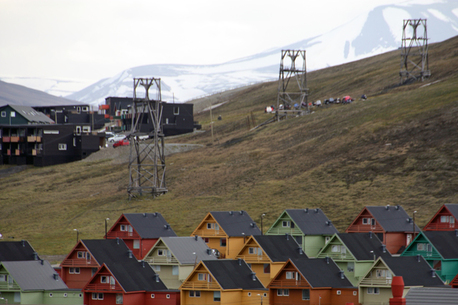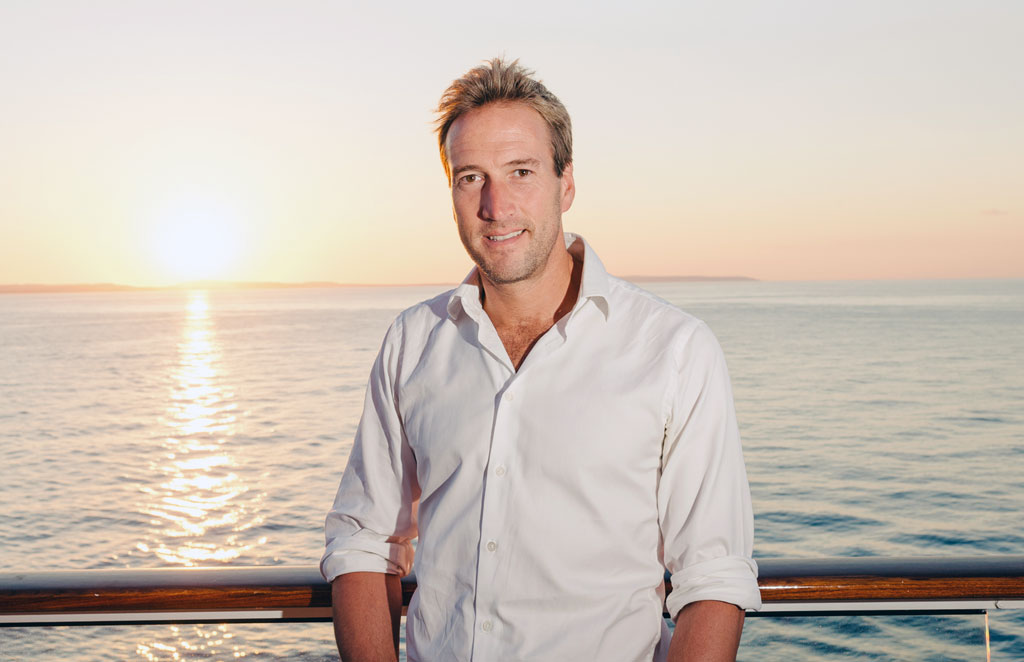 Temperatures in the 80s and sunsets every evening; just two of the things I’ve had to get used to this week after my Quest for Adventure cruise to Svalbard.
Temperatures in the 80s and sunsets every evening; just two of the things I’ve had to get used to this week after my Quest for Adventure cruise to Svalbard.
They have not erased memories of a wonderful journey to a stunning region. I love the Norwegian fjords and Alaska, but Spitsbergen – with its glaciers and snow-covered peaks, an abundance of whales, dolphins, seals and seabirds – beats them all.
I was fortunate to travel to the region when I did; new regulations and restrictions will limit the number of cruise ships allowed in within a couple of years.
The point was made by Capt Steve Angove, of Saga Sapphire, who visited Magdalena Bay, Ny Alesund and Longyearbyen just a few days ahead of Quest.
In his Captain’s Blog, he wrote: “The environmentally sensitive area is becoming increasingly restrictive to visit with a number of fjords as well as coast within 12 nautical miles of land off-limits to vessels carrying heavy fuel oil (most ships).
“In fact in two years Magdalenefjord as well as Ny Alesund will also be off limits to the majority of ships, so next year will be the last opportunity to visit these parts of Spitsbergen for us.”
Longyearbyen, capital of Svalbard, is a fascinating place. Here are a few facts I learnt from our local guide and from reading about the place.
 Now a picturesque collection of colourful wooden houses, and with a marvelous polar museum, a couple of comfortable hotels and a burgeoning bar scene, it was founded in the early 20th Century as a somewhat inhospitable centre for coal mining.
Now a picturesque collection of colourful wooden houses, and with a marvelous polar museum, a couple of comfortable hotels and a burgeoning bar scene, it was founded in the early 20th Century as a somewhat inhospitable centre for coal mining.
American John Longyear set up the industry on the island, and the frontier town which carries his name was became a barracks for about 500 miners. Most mines have now closed but one continues to operate, providing fuel for the power station. Relics from the mining era must, by law, be preserved.
The town’s buildings stand on stilts to prevent heat from inside melting the permafrost beneath. It can get muddy and dirty outside, especially during the short summer so it is a local custom to remove shoes when going into people’s homes, hotels, and the church.

 Reindeers roam the streets and polar bears are frequent visitors – there are 3,000 on the island. Warning signs are posted at the edges of the settlement and it is illegal to go beyond them without being armed. Guns are not, however, allowed inside buildings.
Reindeers roam the streets and polar bears are frequent visitors – there are 3,000 on the island. Warning signs are posted at the edges of the settlement and it is illegal to go beyond them without being armed. Guns are not, however, allowed inside buildings.
There are stuffed polar bears on display throughout the town, in the museum, in shops, and in bars. There’s even one in the church, for some reason, shot in 1987. I saw polar bearskin rugs on sale for about £10,000.
At a latitude of 78 degrees N, Longyearbyen enjoys unbroken daylight during the summer but also goes for four months in the winter without seeing the sun. Average daytime temperatures range from -14 deg C in January to 6 deg C in July.
 Quirkiest of all, there are no births on the island, and no burials. The modern hospital in Longyearbyen is not equipped for emergency deliveries, so expectant mothers are taken to the Norwegian mainland about three weeks before their due date.
Quirkiest of all, there are no births on the island, and no burials. The modern hospital in Longyearbyen is not equipped for emergency deliveries, so expectant mothers are taken to the Norwegian mainland about three weeks before their due date.
The permafrost prevents buried bodies from decomposing, and also results in coffins being pushed out of the ground, so interments were stopped about 70 years ago. Bodies are taken to the mainland; some are cremated for the ashes to be returned to the island.
Quest for Adventure will be renamed Saga Pearl II later this year and returns to Svalbard next summer. The 15-night Arctic Explorer cruise leaves Dover on June 22; fares start at £2,789.








Leave A Comment